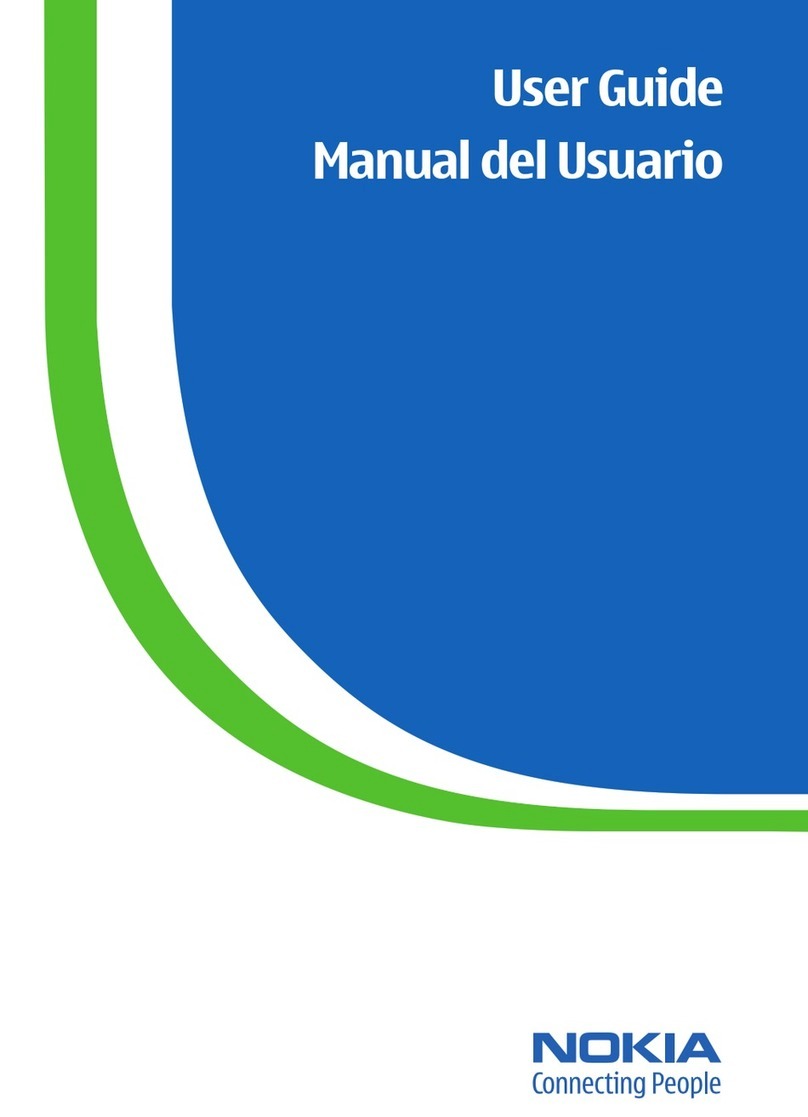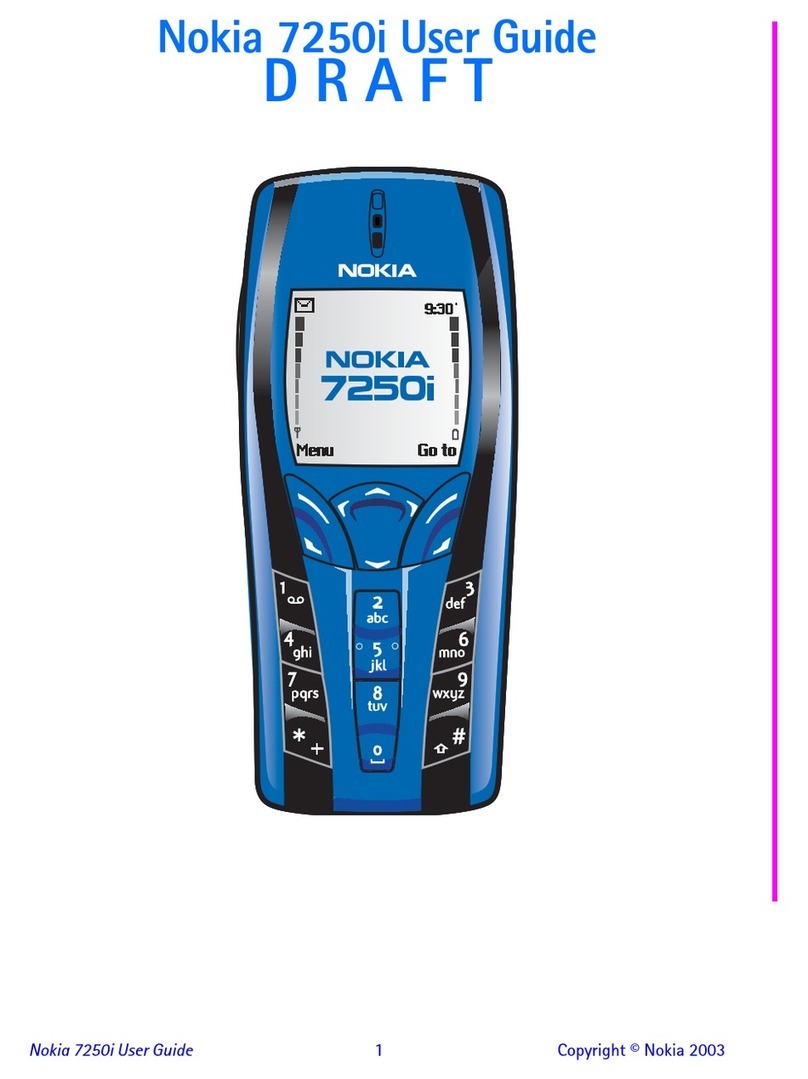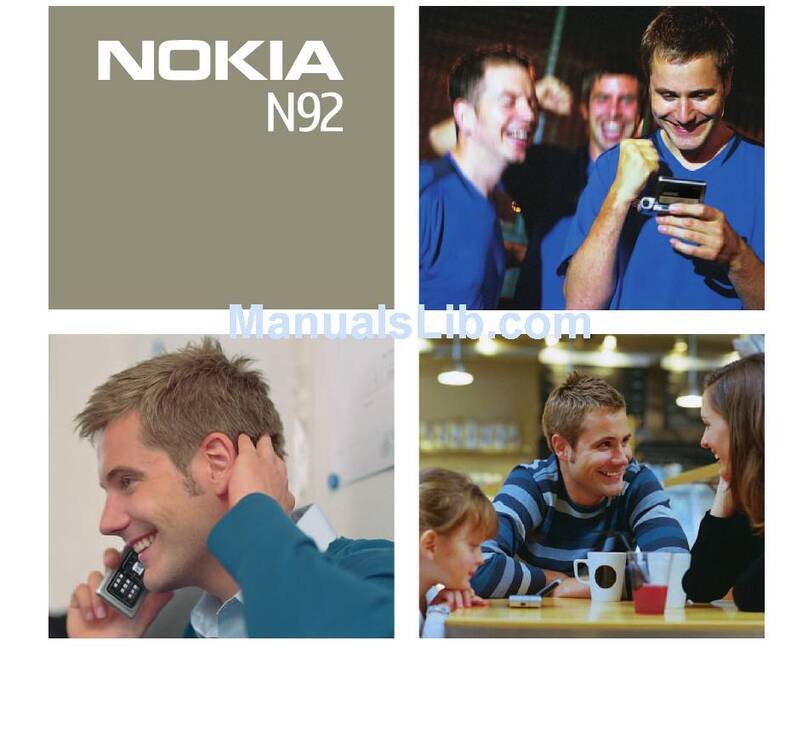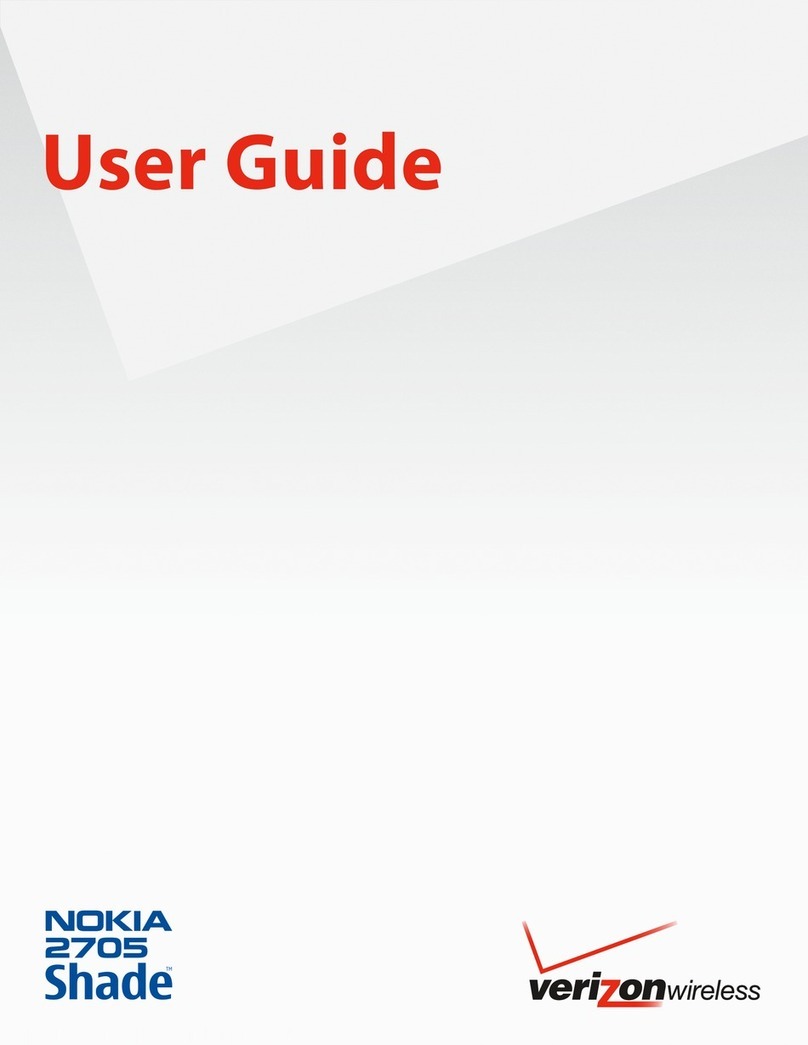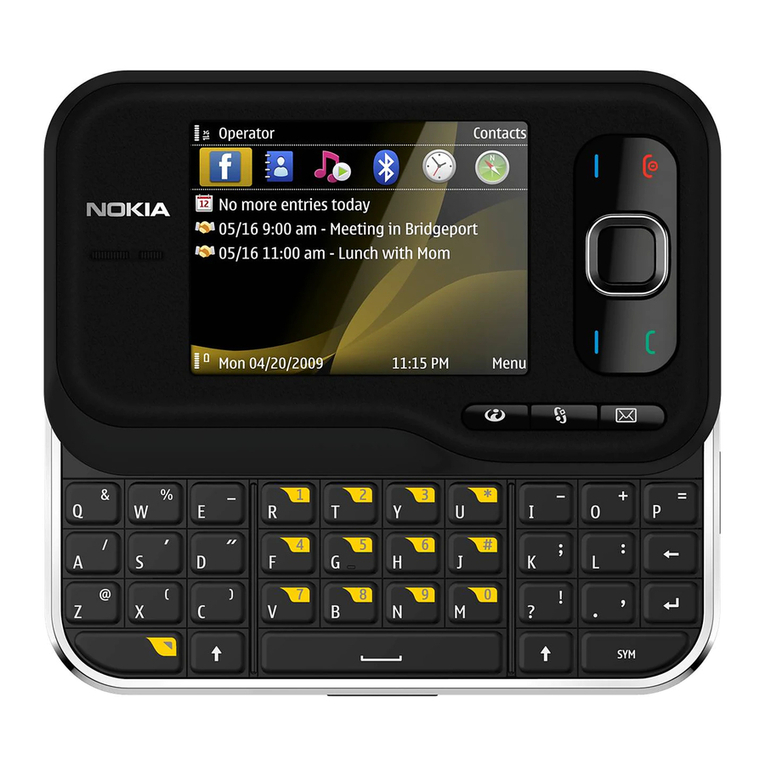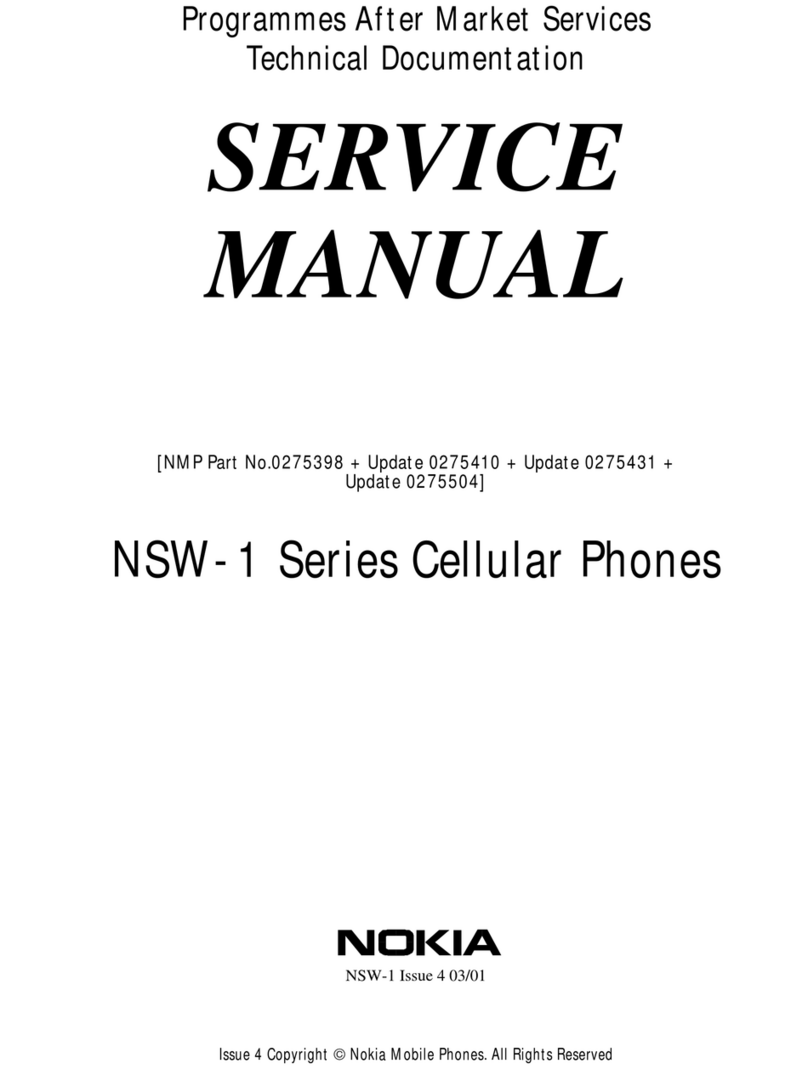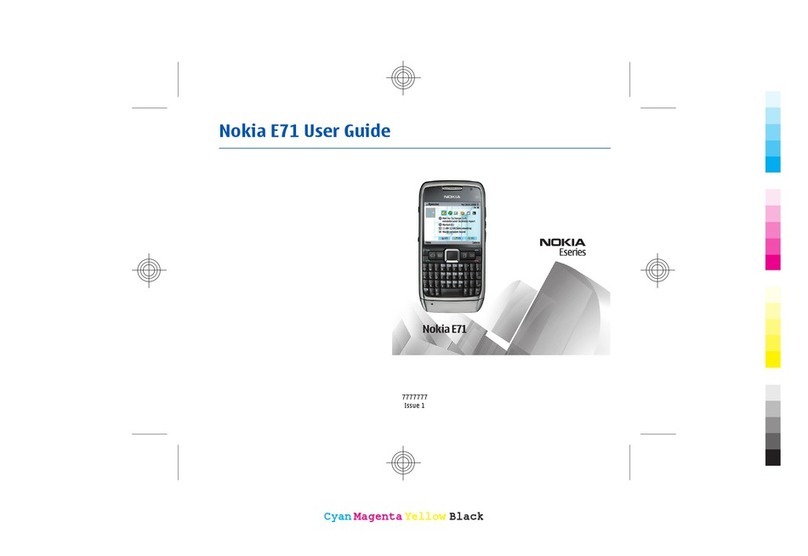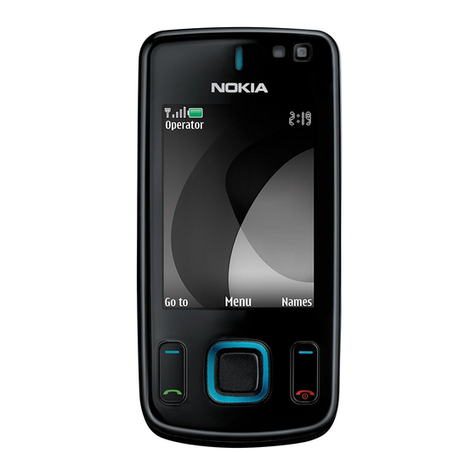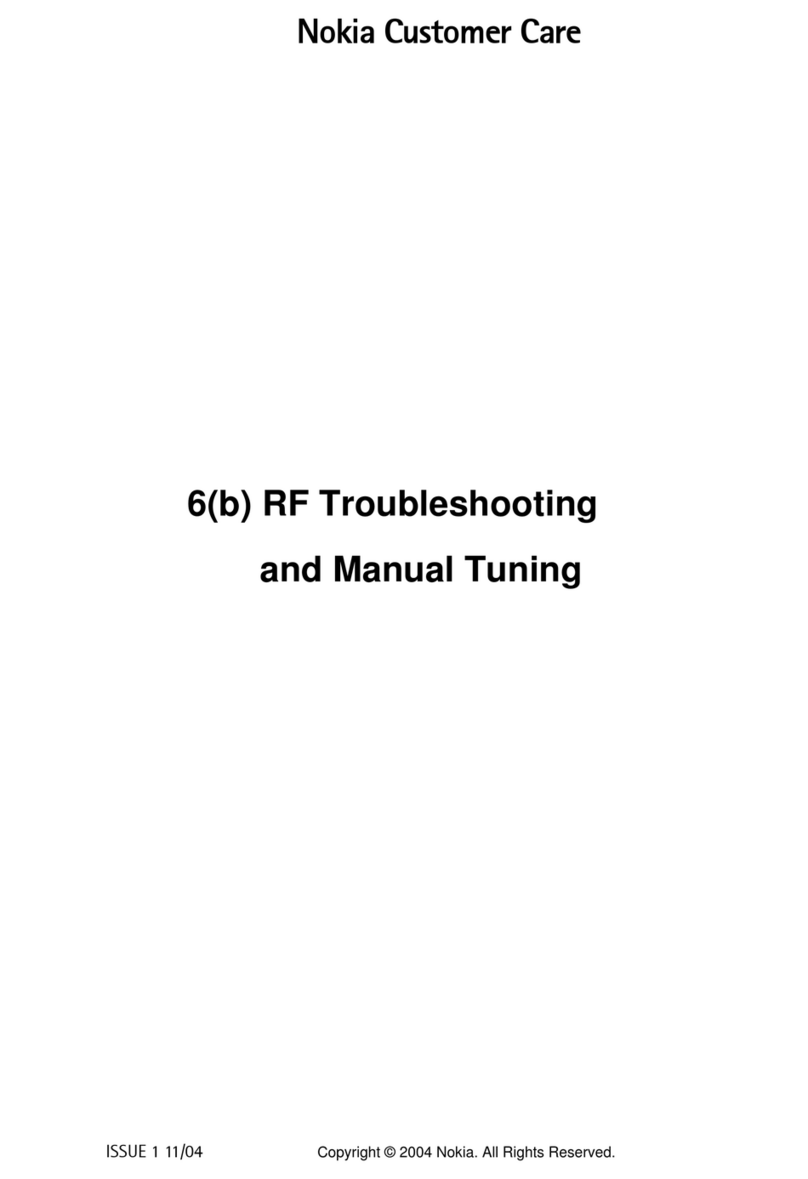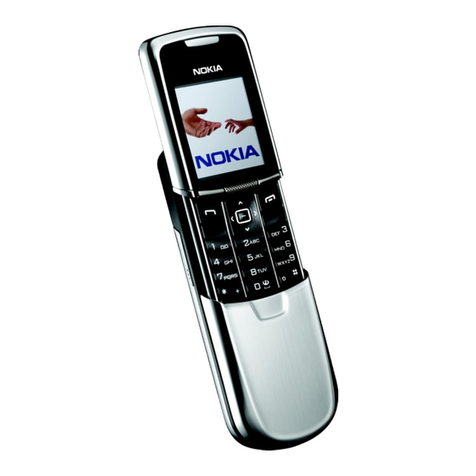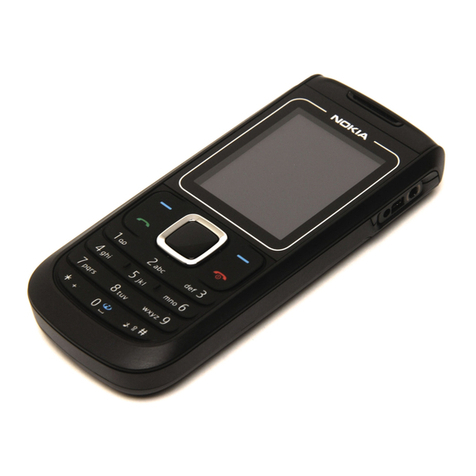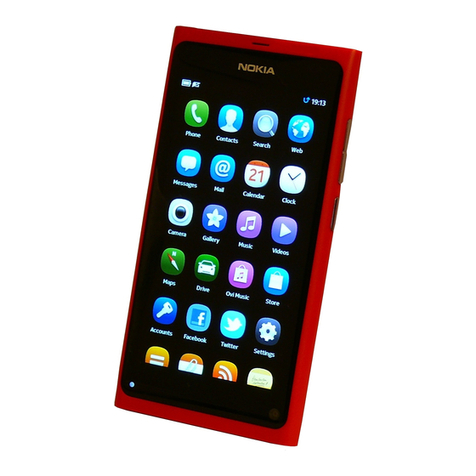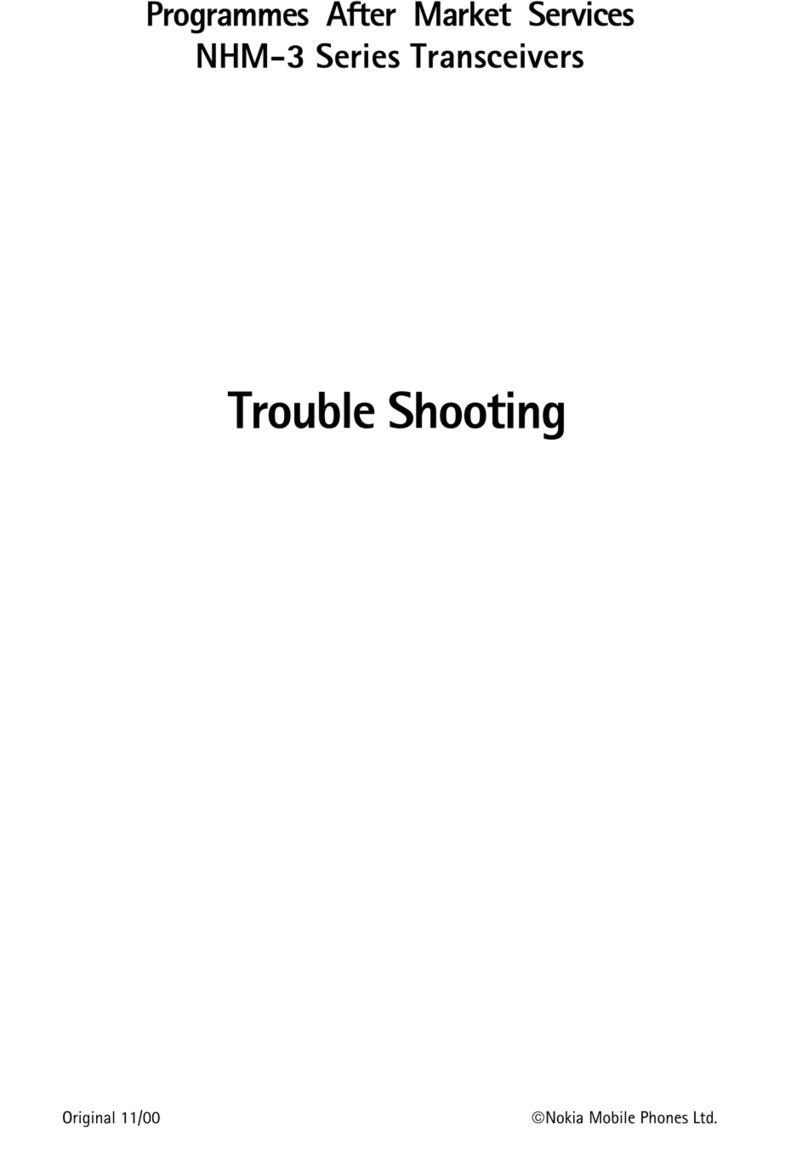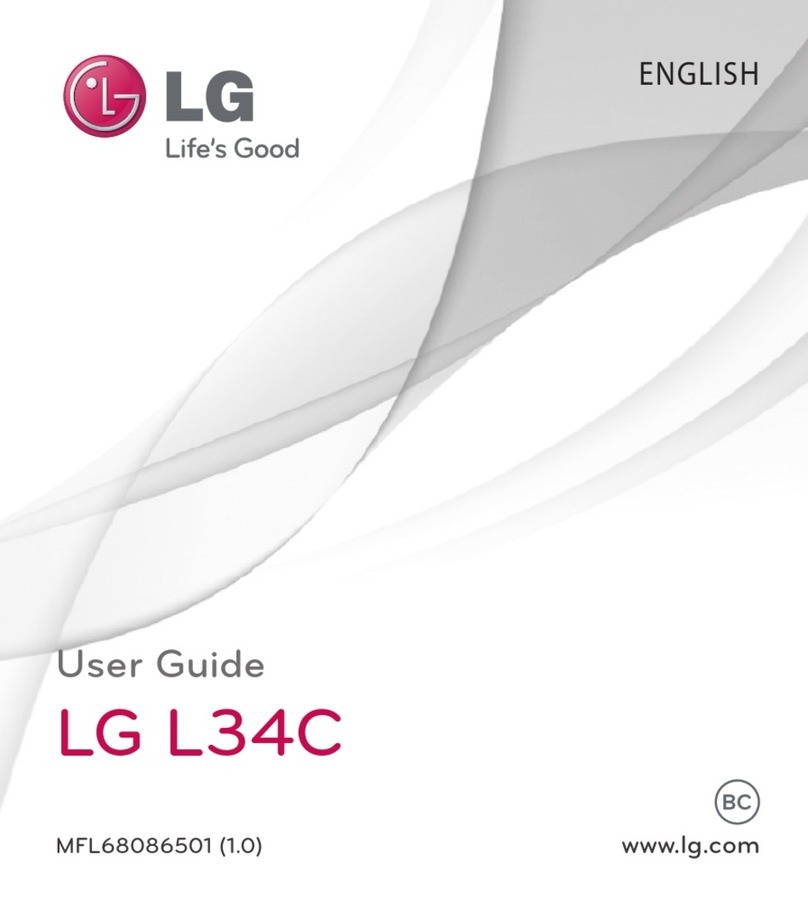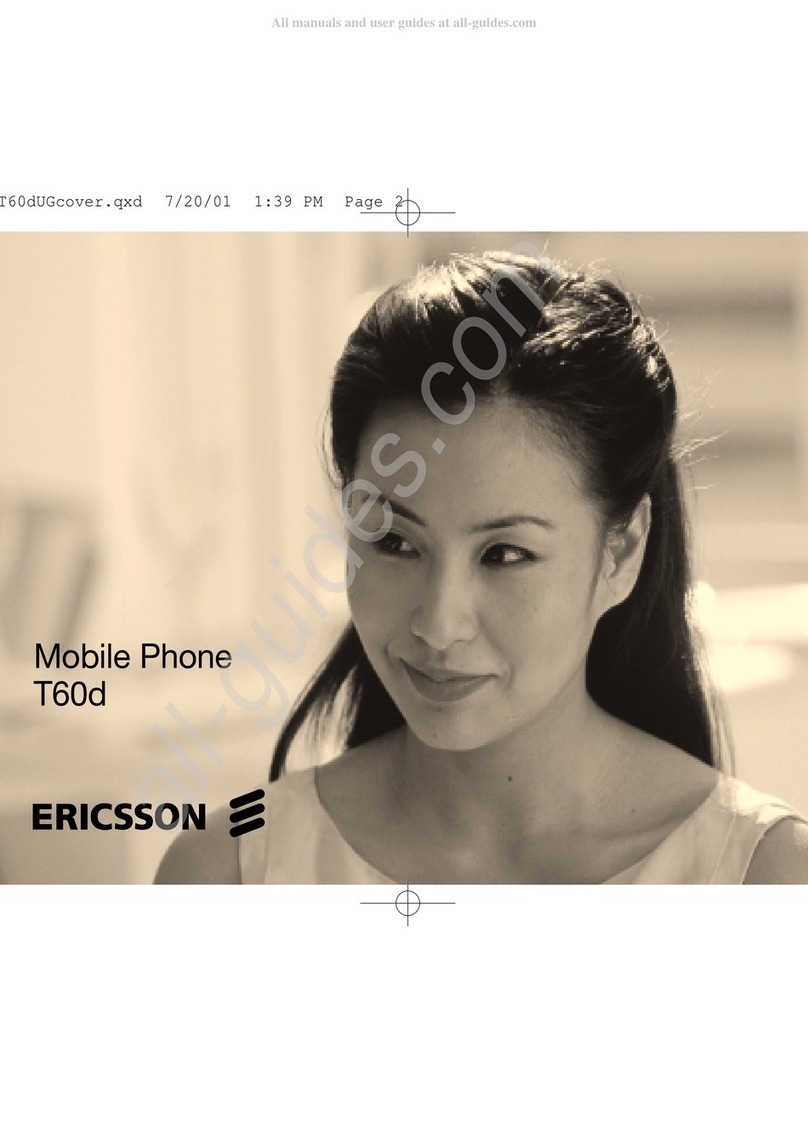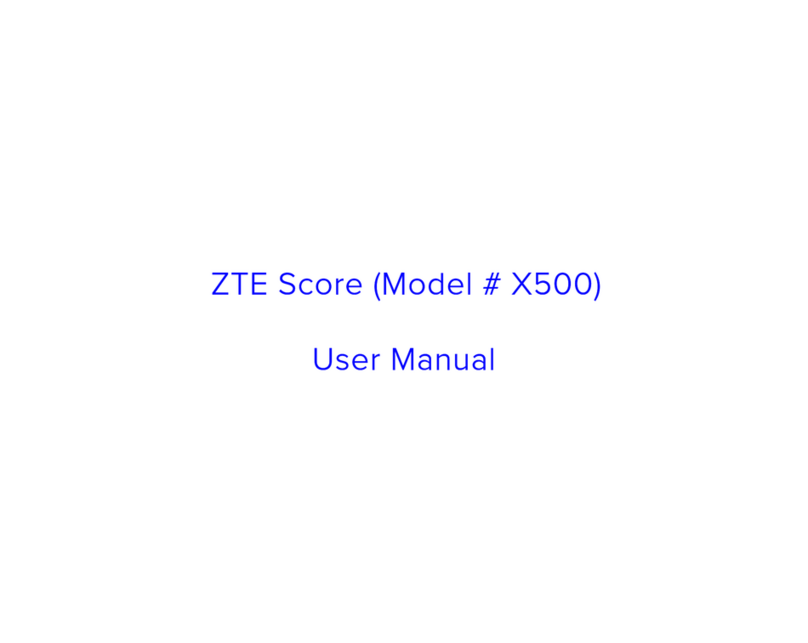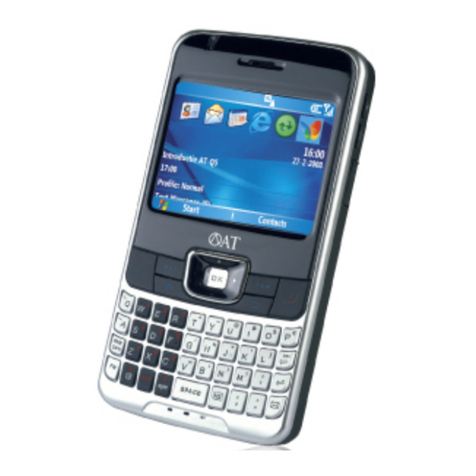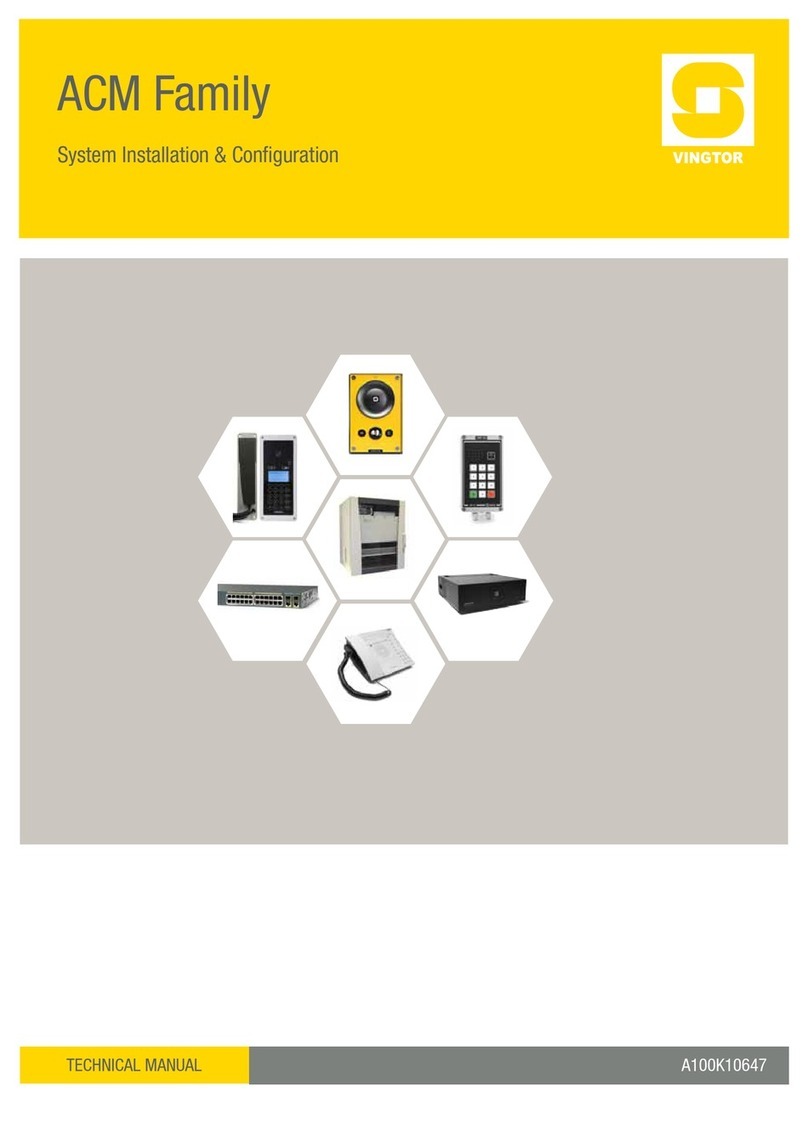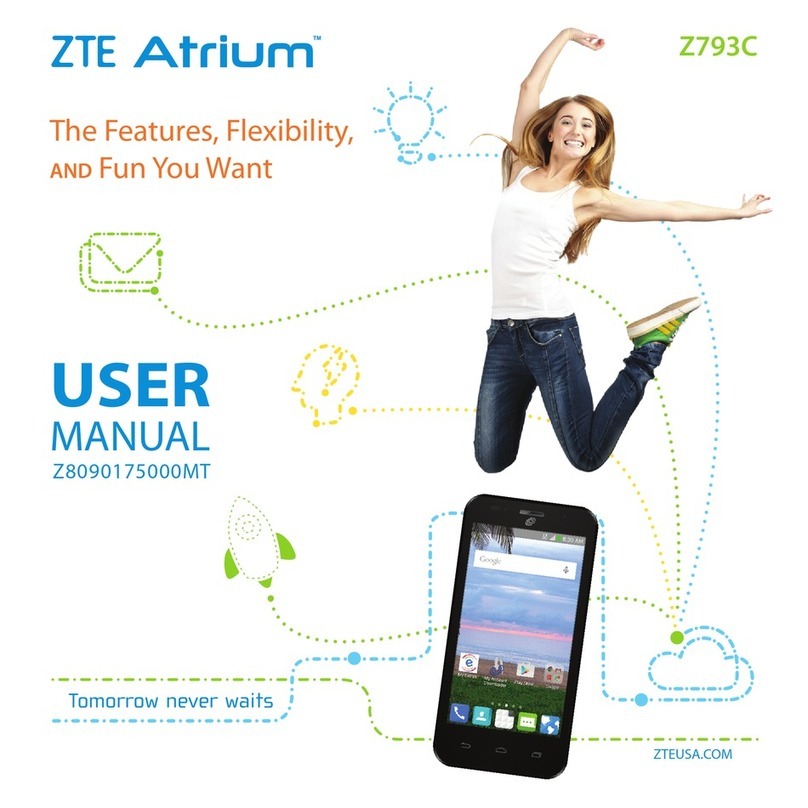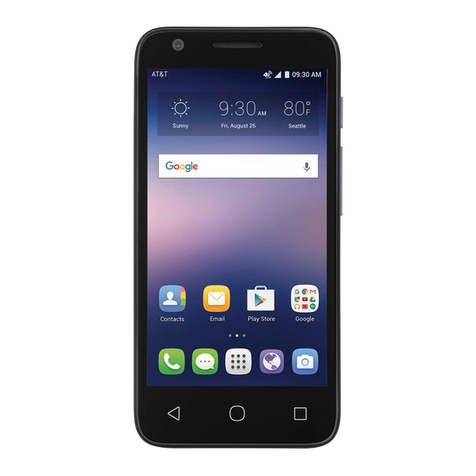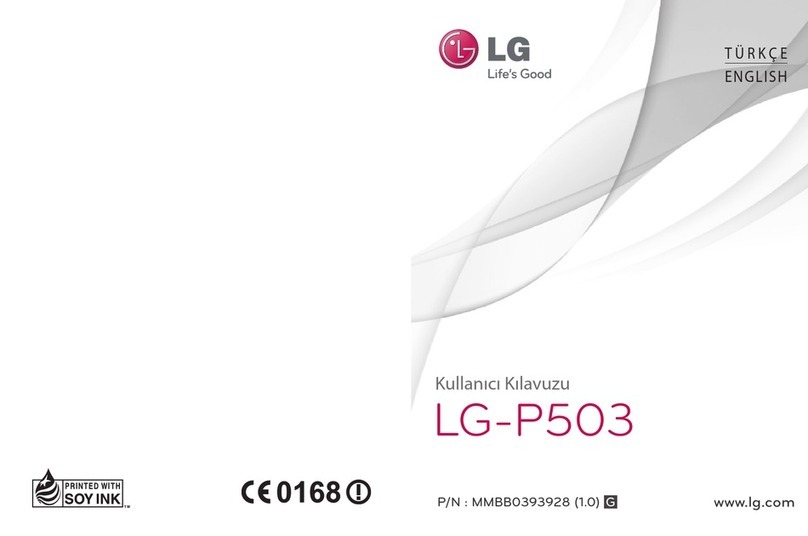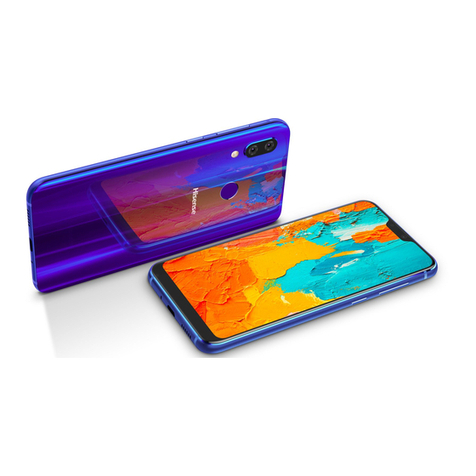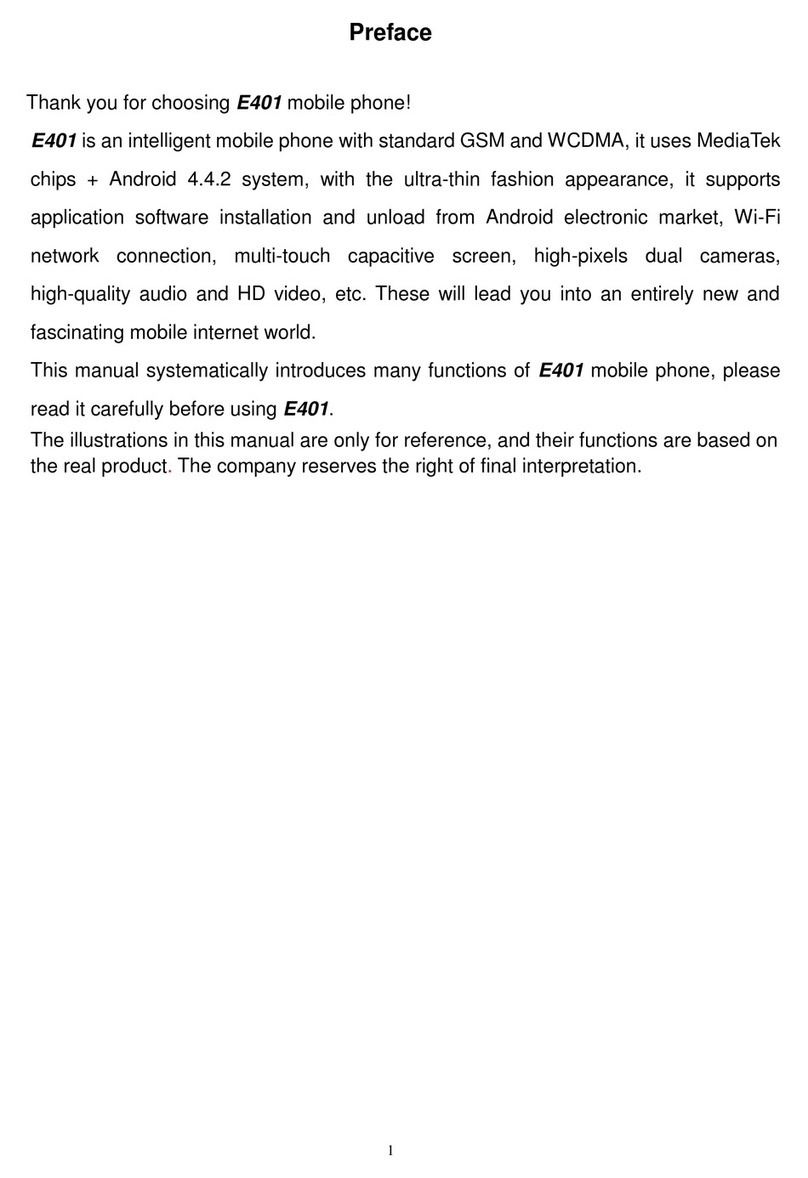
Sales package content and product features might vary depending on region and product variant.
Copyright © 2011. All rights reserved. Nokia is a registered trademark of Nokia Corporation.
Restricted substances
Nokia is an industry leader in substance management. We proactively manage and keep track of all the substances in our products,
not just those that raise concerns. We have strict requirements for substances that are not allowed in Nokia products.
These are defined in the Nokia Substance list, which is available at www.nokia.com/substances
This product fully complies with all relevant global regulations, for example:
The EU RoHS Directive 2002/95/EC
“Management Methods on the Prevention and Control of Pollution caused by Electronic Information Products” commonly known as “China RoHS”
European REACH Regulation 1907/2006/EC
The Montreal Protocol on Substances That Deplete the Ozone Layer
Additionally, Nokia has voluntarily restricted the use of many other harmful substances, and calls attention to substances such as skin
sensitizers and substances that might cause harm to the environment or to the user during the lifecycle of the phone.
Some details of such substances for this product are listed below:
The surface of this device does not contain nickel in the platings.
This product does not contain Brominated or Chlorinated compounds or Antimony trioxide as specified in Nokia Substance List requirement and
definition.
Polyvinylchloride (PVC) is not used in this product or its packaging
Charger no-load power consumption:
The supplied battery complies with the EU Battery Directive 2006/66/EC and does not contain cadmium, lead, or mercury in
concentrations higher than those defined in the directive.
The supplied charger meets EU ErP directive and regulation 278/2009 and EU Code of Conduct on Energy Efficiency of external power
supplies.
More information on chargers and the Charger Energy label at www.nokia.com/chargerenergy
Packaging
We work to minimize the environmental impact of our packaging by selecting sustainable materials, reducing the packaging size,
reducing the volume of material we use, and considering what happens to the package when it is no longer needed.
Nokia’s packaging contains no hazardous or restricted substances, and is fully compliant with the EU directive 94/62/EC.
Find out more about our packaging at www.nokia.com/packaging
The measured values are dependent on several factors, e.g. measurement environment, frequency and operator network settings. The
measurements are made @ 1800 MHz according to reference document: GSM Association Official Document: DG.09, ‘Battery Life Measurement
Technique’ www.gsmworld.com/documents




